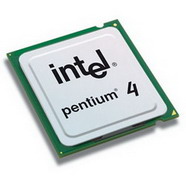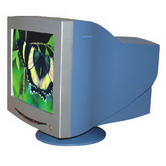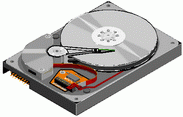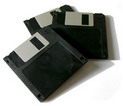CPU
The CPU or the Central Processing unit is the brain of the computer and the single most important chip in the computer. Modern processors contain millions of transistors which are etched onto tiny square silicon called a die, which is about the width of a standard thumb. The CPU performs the system's calculating and processing.
The speed at which a CPU processes is known as its Clock speed. The speed of the CPU is measured in either Megahertz (MHz) or more commonly now in Gigahertz (GHz). A 1 GHz CPU can carry out 1 billion instructions per second!
Now days, CPU available in the market, have a clock speed of 3 GHz.
Arithmetic logic unit (ALU) is a digital circuit that performs arithmetic and logical operations. The ALU is a fundamental building block of the central processing unit (CPU) of a computer, and even the simplest microprocessors contain one for purposes such as maintaining timers.
 |  |
Main Memory
The main memory holds the program instructions and data. It contains two types of memory chip, called ROM and RAM.
 |  |
Input Devices
Input devices are used to put data and instructions into a computer. Most common input devices are keyboard and mouse. Click here to go to Input Devices topic
 |  |
Output Devices
Output devices are used to get the result of the processing done by the computer. Most common output devices include monitor and printer. Click here to go to Output devices topic.
 |  |
Secondary /backing storage devices
Secondary or backing storage is used to store programs and data when they are not being used
.





